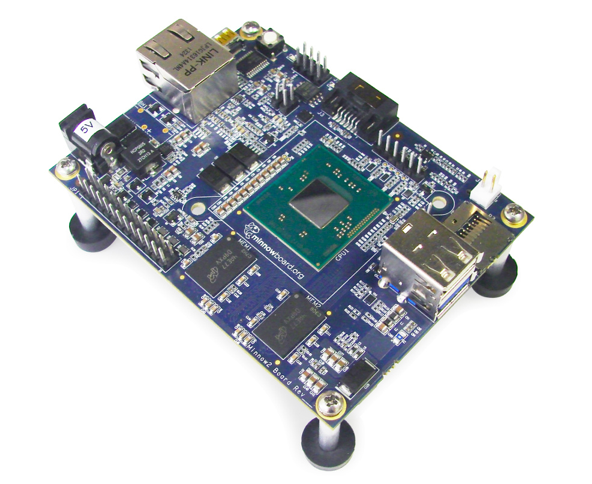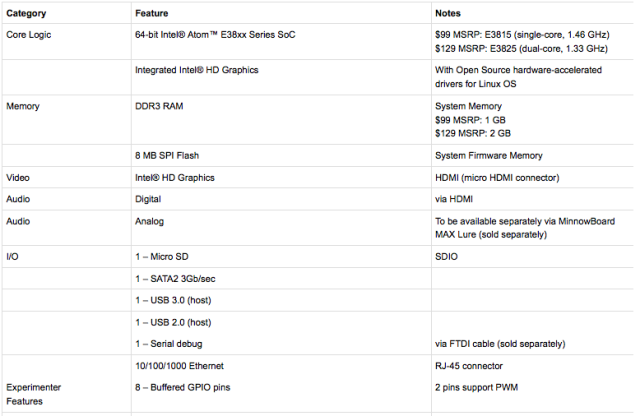
Intel and CircuitCo have unveiled their second-generation MinnowBoard, cutting the price of the tiny computer from $199 to $99.
“MinnowBoard Max” was announced yesterday and is expected to go on sale in June. The $99 version includes a single-core, 1.46GHz, 64-bit Intel Atom Processor E3815. The $129 version includes a dual-core, 1.33GHz, Intel Atom E3825.
These chips, based on the Bay Trail architecture, should provide a significant boost over the first generation MinnowBoard that shipped with a 32-bit, 1.0GHz, Intel Atom E640 processor.
As we reported when the first MinnowBoard came out, “The device is suitable for anything from hobbyist projects to high-performance embedded applications, with I/O performance being one of the MinnowBoard's standout capabilities. PCIe, SATA disk support, and Gigabit Ethernet make it suitable for file servers and network appliances.”
Intel noted yesterday that MinnowBoard Max “uses open hardware, open source software, and an embedded development platform manufactured by CircuitCo Electronics.” It supports “development with the Yocto Project, Linux, and Android” and is a “versatile, entry-level development option for IA (Intel Architecture) embedded and product developers who need to reduce design and development costs by making modifications to the open hardware and software.”
A MinnowBoard Max FAQ further notes that the "board targets the small and low-cost embedded market and was designed to appeal to both embedded developers and the maker community." The device can be used for "embedded applications or product development where interfacing with custom hardware (whether I2C sensors, custom FPGAs through PCIe, etc.) is needed."
The MinnowBoard Max's hardware design files will be made available under a Creative Commons license. Max uses a 5V power supply and is a bit smaller than the first generation, measuring just 2.9x3.9 inches. Here’s a more extensive look at the specs:

Once MinnowBoard Max is on sale, ordering information will be available at MinnowBoard.org's distributor page.
reader comments
64